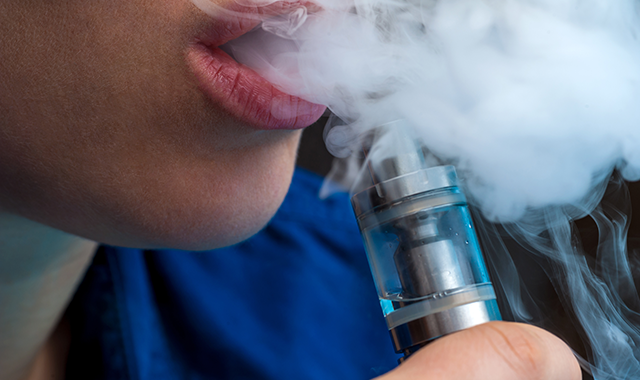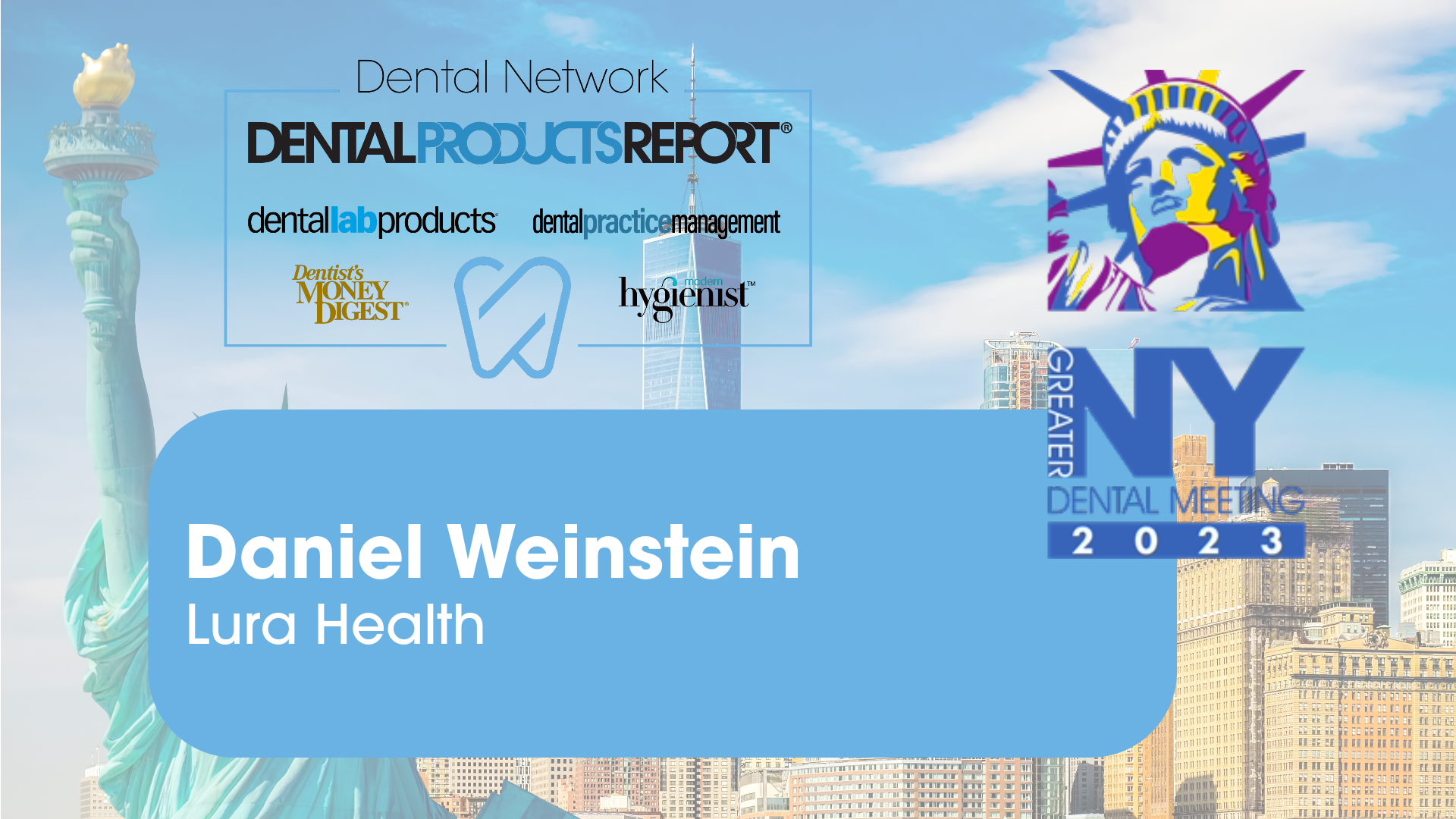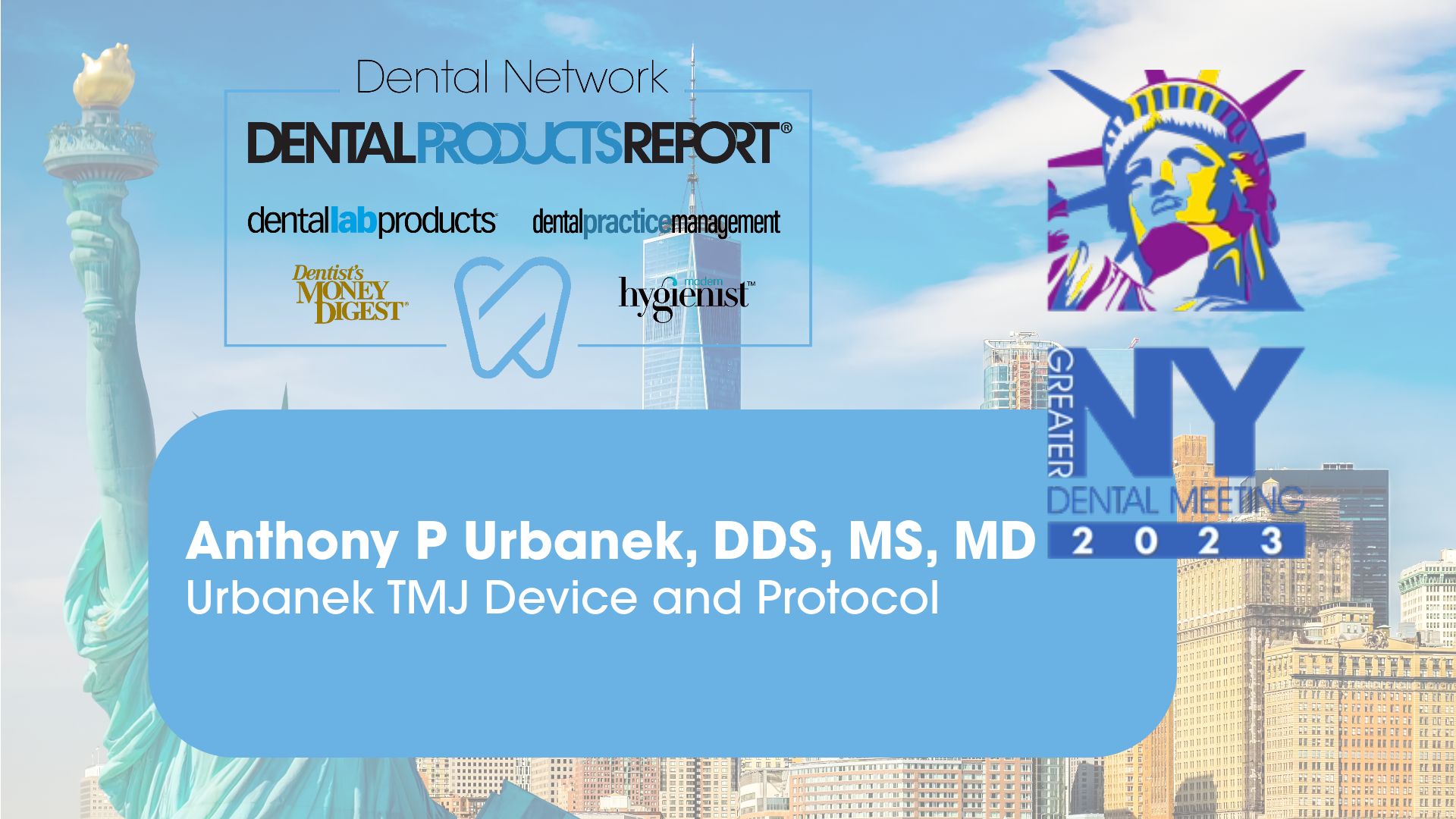The dangers of the growing teenage vaping trend
As vaping becomes more and more popular among teens, oral-health repercussions are growing.

When I was a young teen, my cousin gave me a cigarette to smoke. We were standing on my parent’s driveway when I lit up and took a puff. With a history of asthma, the cloud of smoke repulsed me. That one incident was the extent of my smoking history other than smoking marijuana once with a best friend in high-school and passing out.
News headlines are screaming concern about youth vaping and for good reason. As cases of vaping-related lung illness in young people surge and several deaths are linked to the illness, federal health and other public health officials, medical experts and researchers are scrambling to understand a growing epidemic that begs for an urgent response.
After decades of fighting major tobacco companies for fraudulent and unlawful conduct, the Federal Government is now focusing on the e-cigarette manufacturers and their marketing tactics which target youth. The Centers for Disease Control and Prevention (CDC) has now issued a blunt warning to youth: if you haven’t started vaping, don't. And if you are vaping, stop.1
Trending article: Study finds secondhand smoke exposure linked to increased dental decay in children
I’ve started visiting a vaping shop near my gym in an effort to learn more about the youth vaping appeal and I’ve been given a lot of shocking information, especially about youth addiction to nicotine. Walking into the vape shop, I was greeted by a young woman who almost immediately blew a cloud of e-liquid vapor in my face while she was trying to size me up. I wasn’t worried about second-hand vapor, but I did think it a bit unwelcoming. I’m not shy when it comes to asking questions and the young male store manager named Matthew quickly took over and approached me in a friendlier manner. Matthew taught me that there are two types of customers who walk through the door: those who want to get high (head rush) from nicotine and those individuals who are trying to quit smoking.
There are two types of nicotine in an e-cigarette: free base and nic salt. Nicotine for vaping is contained in e-juice (vape juice) and it’s a mixture of water, food-grade flavoring, nicotine and propylene glycol (PG) or vegetable glycerin (VG). Free base e-juice is used in vaping where flavor is the driver and it’s lower in nicotine when compared to nic salt e-juice. Nic salt is more popular with smokers, compared to free base because the nicotine salt base juice will affect the bloodstream faster than traditional vape juice.
Related reading: New research finds sweet e-cigarettes can increase risk of dental cavities
Shaking up the vape game and going beyond free base nicotine, nic salt e-juice is married to pod systems for vaping-and pod systems are more powerful than free base. Nic salts have a specific alkaloid salt combined with nicotine and a ton of chemicals and you can inhale a much higher levels of nicotine. JUUL, a very popular youth vape system, is a nic salt system. Nic salt doesn’t produce as much vapor and is much more powerful than free base.
The devices to deliver nicotine via vaping keep getting smaller. The JUUL salt nic devices are a closed pod system. When the pod runs out of vape juice, you need to buy a brand new pod. Some youth who use JUUL report using one pod a day which is the rough nicotine equivalent of a pack of cigarettes. Take a peek at the JUUL system online and you’ll observe a sleek, ‘techie’ device with cool flavors. You can fit a JUUL device in one hand and a pencil in the other. Packaging is slick and flavors are cool like strawberry kiwi and mango. Kids are drawn to JUUL, in particular, just as they are attracted to an iPhone or a Fitbit.
Continue to page two to read about vaping abuse in teens...
Vaping abuse in teens
Since 2014, vaping has been the most commonly used tobacco product among U.S. middle and high-scool students and the number of youth who vaped rose by 1.5 million between 2017 and 2018.2
In 2018, about 37 percent of high school teenagers reported vaping and that was a jump of almost 10 percent from the year before.1
It seems we’re going backwards when it comes to nicotine addiction. Research shows that e-cigarette advertising uses many of the same themes that have led to cigarette smoking among teens.3 Advertising is everywhere; in stores, on the internet and TV or in magazines, newspapers and billboards. Advertising makes e-cigarette use look harmless for young people but teens know that cigarettes can cause disease and even death.3
Read more: E-cigarettes shown to be detrimental to oral health in new study
What most students don’t know is that the nicotine in e-cigarettes can harm brain development. Nicotine is highly addictive and the human brain keeps developing until around the age of 25. Changes in the brain as a result of exposure to nicotine can increase the addiction to other drugs.3
Nicotine products can harm parts of the brain responsible for memory, attention, learning, poor impulse control and attention deficit disorder. Young people who use e-cigarettes also smoke regular cigarettes. In addition, there is evidence that young people who use e-cigarettes may be more likely to smoke regular cigarettes in the future. E-cigarettes have vapor components that contain harmful components like heavy metals and even cancer-causing chemicals that are breathed deep into the lungs. With off-brands, we don’t even know much about what’s in the e-juice and how it affects the lungs.3
For example, some state health departments and media reports suggest that many of the cases of lung problems and deaths from vaping involve tetrahydrocannabidol, known as THC, the psychoactive chemical in marijuana. Teens are vaping with THC oils in various e-cigarette devices like vape pens or pencils and some of the vape pens with prefilled cartridges are purchased in an illegal black market.4 In a recent statement, the FDA said it was examining whether vitamin E acetate, a vape-juice thickener, may have played a role in respiratory illnesses and deaths. "Because consumers cannot be sure whether any THC vaping products may contain vitamin E acetate, consumers are urged to avoid buying vaping products on the street, and to refrain from using THC oil or modifying/adding any substances to products purchased in stores," the agency said in a statement.5
Related reading: Study finds smoking dangerously alters oral microbiome
How much nicotine is in a U.S. e-cigarette?
Nicotine is a gateway drug and it is addictive. This message about addiction is prominently displayed in JUUL and other vape company advertising, just as it is on cigarette packs. But just how much nicotine is in a U.S. pod?
British JUUL pods use 20 mg/mL of e-juice (1.7 percent by weight) which is about one-third the nicotine found in an American JUUL pod, which offers e-cigarette smokers 59 mg/mL. Some e-cigarette juice formulas pack as much as 72 mg/mL nicotine per refill.
Nicotine levels in the UK and in the EU are limited by the rules of the Tobacco Products Directive (TPD).6 The TPD or European Tobacco Products Directive is a directive of the European Union which places limits on the sale and merchandising of tobacco and tobacco-related products in the EU.7
Teens under the age of 18 cannot legally pick up an e-cigarette and vape. As of January 2018, federal vaping laws for minors forbid anyone younger than 18 years of age from purchasing and using any any vaping device including e-cigarettes, electronic vaporizers, and e-juices.9 The FDA not only has an age requirement, but a valid photo ID is needed for purchase and a nicotine warning label is placed on all nicotine-containing products as of 2019.8
Continue to the next page to read about the oral health effects of vaping...
Vaping legal age
Because underage vaping is now a habit among American youth, just like wearing an Apple watch or carrying an iPhone, curbing the habit is proving to be a challenge. Underage vaping is not considered a crime in the U.S. in many places, but vape purchasing in states varies from state to state. You can check out the legal age for vaping in the U.S. which ranges from age 18-21 here.
Trending article: New study finds smokers are at higher risk of losing teeth
Oral health effects of vaping
From 2011-2019, vaping has increased about 500 percent in middle school and 800 percent among high school students. Since a tsunami of teens in the U.S. are now vaping, oral health care professionals must be aware of possible systemic and oral health effects of vaping and follow the research and public health recommendations accordingly.
Potential oral health effects of e-cigarette use is in the early stages but there are plausible mechanisms by which e-cigarettes could harm the oral tissues.10 Because e-cigarettes can deliver nicotine at levels similar to cigarettes, along with potential toxic aerosol components, clinicians should look for signs of xerostomia (which is also associated with dental caries) and damage to the periodontium.
At doses similar to heavy smoking, it’s possible that vaping increases the risk and severity of periodontitis, just as smoking does.10 Nicotine stomatitis is possible along with inflammation of minor salivary glands. There are few case reports or epidemiologic studies to confirm these findings. In one case study, a young patient who had been using e-cigarettes for five years (one pod a day~ popular brand) and he was combining it with high energy sugar drinks to compensate for xerostomia. This combination led to rampant caries and tooth loss.11
Another patient in a general dental practice had a dental caries free history for about 35 years. The patient stopped smoking traditional cigarettes and decided to vape instead. Within 12 months, cervical enamel demineralization and proximal lesions were found in the mandibular anterior sextant which appeared to be consistent with point of content of e-liquid aerosol.11
Educational tool kits for parents and teachers
A grassroots movement of U.S. parents are fighting to protect kids in what they call Big Tobacco 2.0 and it includes e-cigarette companies.12 The basic toolkit is meant to educate parents and teachers about the vaping epidemic among teens and empower individuals to take action in homes and schools around the U.S. The educational toolkit can be found here.
References:
1. https://www.cdc.gov/tobacco/index.htm’
2. https://www.health.harvard.edu/blog/can-vaping-damage-your-lungs-what-we-do-and-dont-know-2019090417734
3. https://www.cdc.gov/tobacco/features/back-to-school/e-cigarettes-talk-to-youth-about-risks/index.html
4. https://www.420science.com/blogs/news/black-market-weed-cartridges-are-a-big-problem
5. https://www.nytimes.com/2019/09/07/health/vaping-lung-illness.html
6. https://vaping360.com/vape-news/68612/uk-vapers-can-finally-get-a-juul/
7. https://en.wikipedia.org/wiki/Tobacco_Products_Directive
8. https://www.vaporfi.com/blog/understanding-vaping-laws-minors/
9. https://www.vapeloft.com/blog/legal-age-of-vaping-in-the-us-and-canada/
10. https://www.ncbi.nlm.nih.gov/pmc/articles/PMC6454567/
11. https://www.perioimplantadvisory.com/clinical-tips/article/16412201/vaping-and-oral-health-its-worse-than-you-think
12. https://www.parentsagainstvaping.org/parent-toolkit
Floss & Flip Flops Episode 22: National Dental Hygiene Month
October 1st 2023Join the Sanders Sisters and Dr Anna Kay Thompson as they learn about the burning questions the medical community is not asking about oral health. Learn about all of the ways they are celebrating the good work of dental hygienists in their quest for whole-body health.
Maximizing Value: The Hidden Benefits of Preventing Hospital-Acquired Pneumonia Through Oral Hygiene
September 10th 2024Originally posted on Infection Control Today. Hospital-acquired pneumonia (HAP) is a significant infection prevention concern, leading to high patient mortality, increased health care costs, and ICU usage. Oral hygiene is an effective preventive measure.
















